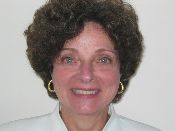2009–2010 Speakers
 |
Dr. Helen BlauStanford University |
Regulation of Stem Cell Fate
Our laboratory is (1) elucidating the molecular mechanisms that lead to nuclear reprogramming toward pluripotency (iPS) and (2) elucidating biophysical and biochemical niche properties that lead to adult stem cell self-renewal using bioengineering strategies.
(1) The reprogramming of somatic cell nuclei towards pluripotency constitutes a major breakthrough in stem cell biology. Key evidence for nuclear reprogramming derives from somatic cell nuclear transfer into enucleated ooytes and overexpression of a handful of factors to produce induced pluripotent cells (iPS). We are using a third approach: heterokaryons. Heterokaryons - interspecific non-dividing stable fusion products - provided novel insights two decades ago by showing that the differentiated state is not fixed and terminal, but instead requires continuous regulation. This heterokaryon fusion system is now uniquely suited to providing insights into the mechanisms that constitute “the black box of nuclear reprogramming” to pluripotency. Using the heterokaryon approach we have shown that active DNA demethylation mediated by Activation Induced Deaminase (AID) is essential to the rapid onset of reprogramming toward pluripotency.
(2) A second major challenge facing stem cell biologists is an understanding of the mechanisms that direct adult stem cell self-renewal. Adult stem cells are localized in niches, specialized microenvironments, which protect them from differentiation. In response to injury, they self-renew and extensively regenerate damaged tissues. Upon culture, adult stem cells lose their “stemness,” or ability to self-renew. We have engineered artificial in vitro microenvironments that mimic key biochemical and biophysical characteristics of adult stem cell niches in order to analyze the properties of stem cells and influence their fate. Ultimately, the goal of these studies is to increase our understanding of stem cell biology, expand stem cells in vitro for clinical applications, and discover new drugs for stimulating a patient’s own stem cells.